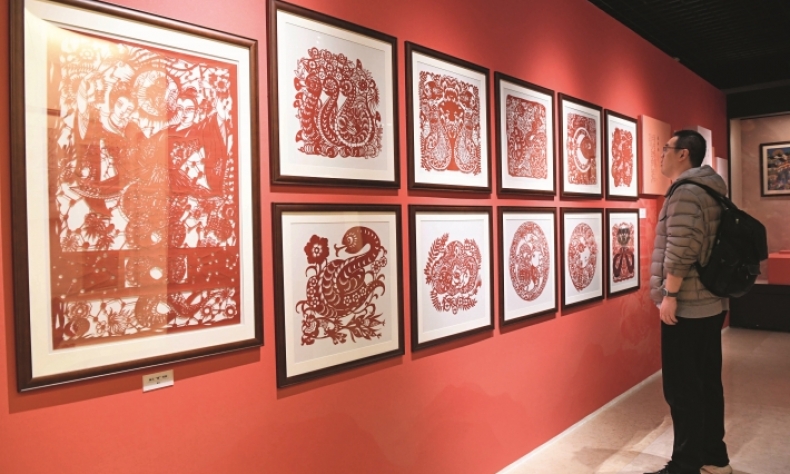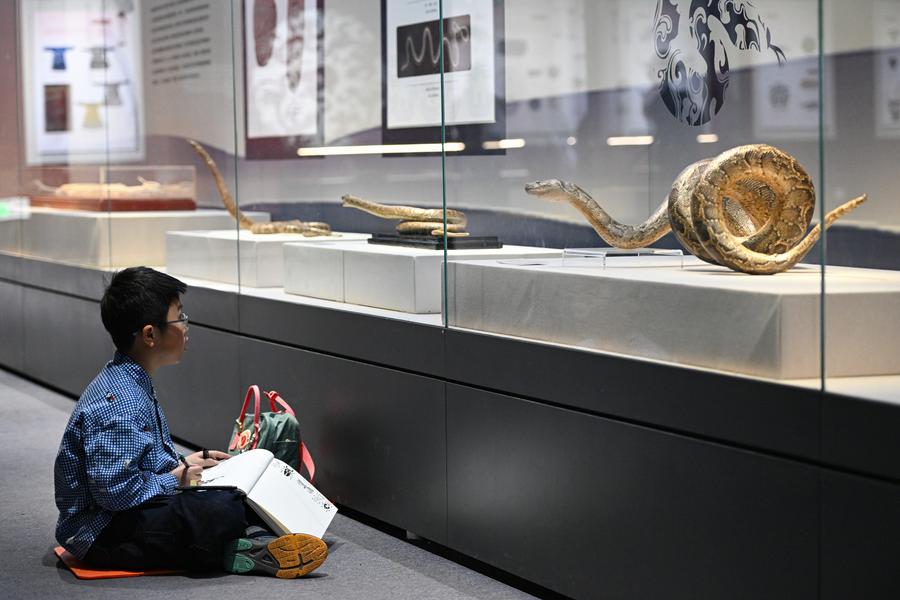Slithering Legends

As we embrace the Year of the Snake, it reminds us of the profound, interconnected symbolism that unites diverse cultures throughout history – an enduring testament to the universal intrigue surrounding this mysterious creature.
From the mythic tales of ancient China to the spiritual practices of West Africa, and from the tombs of Egyptian pharaohs to the emblematic symbols of healing in Greece, the snake has woven itself into the fabric of human culture. Whether as a symbol of fertility, wisdom, healing, or mystery, the snake continues to inspire and intrigue.
As 2025 marks the Chinese Year of the Snake, it is an opportune moment to explore the profound and multifaceted roles snakes play in the cultures and myths of civilisations worldwide.
Snakes in Chinese culture and mythology
In ancient Chinese civilisation, the snake held significant symbolic power. The reverence for snakes can be traced back to the earliest totem worship practices. Among the 58 totemic tribes documented in the ancient text The Classic of Mountains and Seas, eight tribes venerated the snake. Depictions of snake gods proliferate in this text, showcasing its importance in early Chinese mythology. Notably, two of China’s legendary creators, Fuxi and Nuwa, who are also considered progenitors of Chinese civilisation, are often depicted with human upper bodies and serpentine lower bodies. They are a brother and sister who, according to a Chinese myth, were the only survivors of a great flood. Charged with repopulating the world, Fuxi and Nuwa created vast numbers of clay figures, which they were able to bring to life with some divine assistance.
In addition to Fuxi and Nuwa, other mythical figures such as Gonggong and Zhulong also embody snake-like characteristics. The emergence and popularity of these figures symbolise the ancient Chinese respect for natural forces.
Over centuries, the portrayal of snakes evolved in Chinese literature and art. By the Wei, Jin, and Northern and Southern Dynasties (220-589), snakes were often anthropomorphised, transforming from beasts to humans in Chinese folklore. Stories like The Yellow and White Snakes in Sou Shen Er Ji and the renowned Legend of the White Snake are vivid examples. The progression of snake imagery shows a deepening integration of human emotions, desires, and virtues into these once purely symbolic creatures.
Snakes in ancient Egyptian tradition
Snakes were very common in Egypt, not only in the marshy areas of the Nile Valley and the Delta but also in the desert. Not surprisingly, such a dangerous reptile also appears in religious contexts. In ancient Egypt, snakes were seen as primal and powerful entities. Sito is the Egyptian primeval Serpent God that appears on the Papyrus of Ani, embodying the creative forces of primordial life. Ancient Egyptians worshipped Sito as a creative spirit. It was believed that Sito created everything. By entwining his spiritual essence around the world, Sito guarded the cosmic and subterranean world. Another concept, the ouroboros, represents the primordial snake called Sata that surrounds the world, protecting it from cosmic enemies.
Egyptians also attributed divine qualities to snakes. Pharaohs often adorned their regalia with serpent motifs, like the sacred cobra depicted on crowns and sceptres, signifying divine authority and protection.

Snakes in West African traditions
In Benin, snakes hold a central place in spiritual practices. Snakes are a major totem for followers of Vodun, a religion practiced by groups of people within West and Central African nations such as Ghana, Togo, and Benin. In the port city of Ouidah, Benin, pythons are considered sacred beings. The deity Mami Wata, a goddess of the sea, is often portrayed as a mermaid, a snake charmer, or a combination of both. Her statue stands at the entrance of the Python Temple, the focal point of Vodun worship in the region. Here, snakes are not only worshipped but also allowed to roam freely around the town. They are treated as respectable guests by the local people. It is also taboo to kill the pythons – either wittingly or unwittingly – and special cemeteries are designated for deceased pythons. This respect underscores the community’s deep spiritual connection to these creatures.
A connection with healing
Snakes are intricately linked to themes of healing and renewal. In the rock art of southern Africa, snake motifs are associated with health, rejuvenation, and transformation. Some traditions even describe snakes as carriers of water, vital for fertility and sustenance. The snake’s ability to shed its skin has long associated it with ideas of rebirth and transformation.
Similarly, the ancient Greeks viewed snakes as potent symbols of medicine and healing. The Rod of Asclepius, featuring a single snake coiled around a staff, originates from the myth of Asclepius, the hero and god of medicine in Greek mythology. It is a widely used symbol for medicine and health care in modern times, appearing in the logo of the World Health Organisation and other medical institutions.
In one legend, Asclepius killed a snake. He then witnessed another snake approach, carrying herbs that it used to revive the dead one. By closely observing this interaction, Asclepius discovered the hidden healing properties of nature. He later used the very same technique to bring a man back from the dead. In another similar story, he encountered a dying snake and healed it. In gratitude, the snake whispered the secret of the healing arts into Asclepius’s ear. This revelation inspired him to adopt the snake as his emblem.
From the mythologies of ancient China to the spiritual practices of West Africa, from the tombs of Egyptian pharaohs to the health care symbols of Greece, the snake has slithered its way into humanity’s collective imagination. As we embrace the Year of the Snake, it reminds us of the profound, interconnected symbolism that unites diverse cultures throughout history – an enduring testament to the universal intrigue surrounding this mysterious creature.
 Facebook
Facebook
 Twitter
Twitter
 Linkedin
Linkedin
 Google +
Google +










